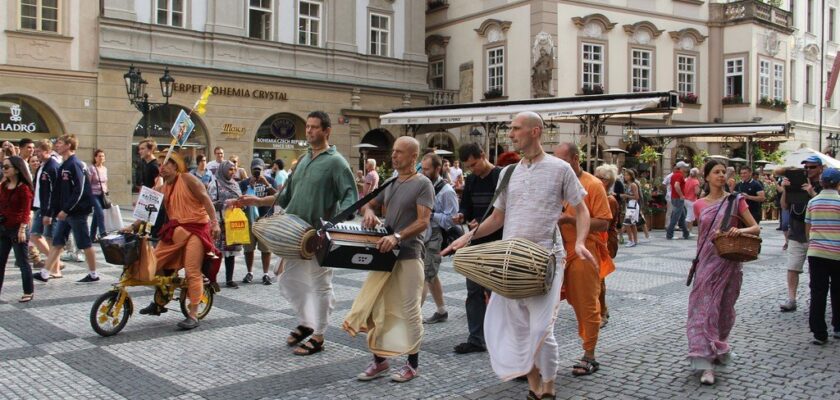Old Town Square (Staroměstské náměstí)
Old Town Square – also called Staroměstské náměstí in Russian – is located in the historical center of Prague, in the Stare Město or Old Town district. It is one of the oldest squares not only in Europe, but also in the world: it has been known since the 12th century. Large, beautiful, majestic, surrounded by architectural masterpieces of different periods and styles – Old Town Square is a landmark that every tourist in Prague should visit.
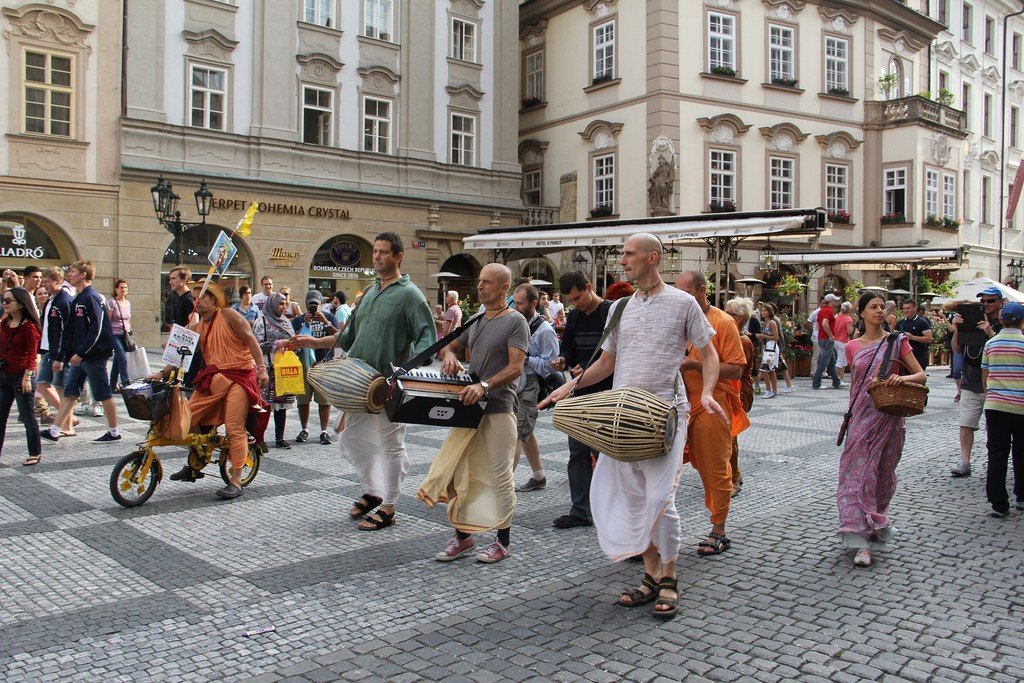
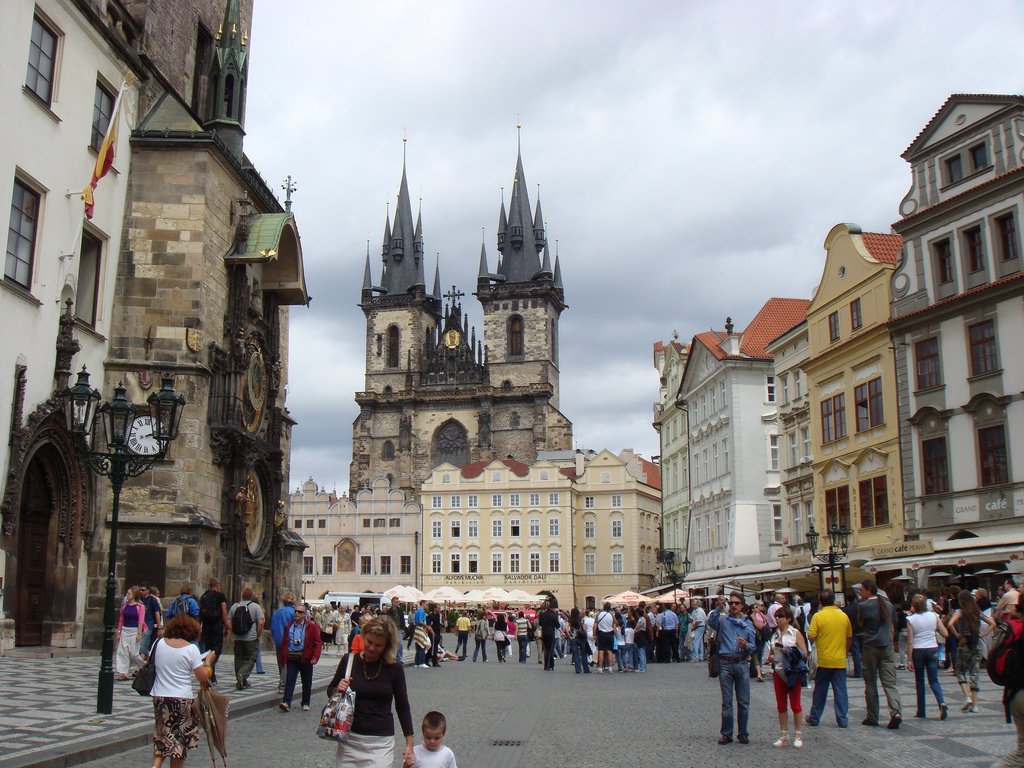
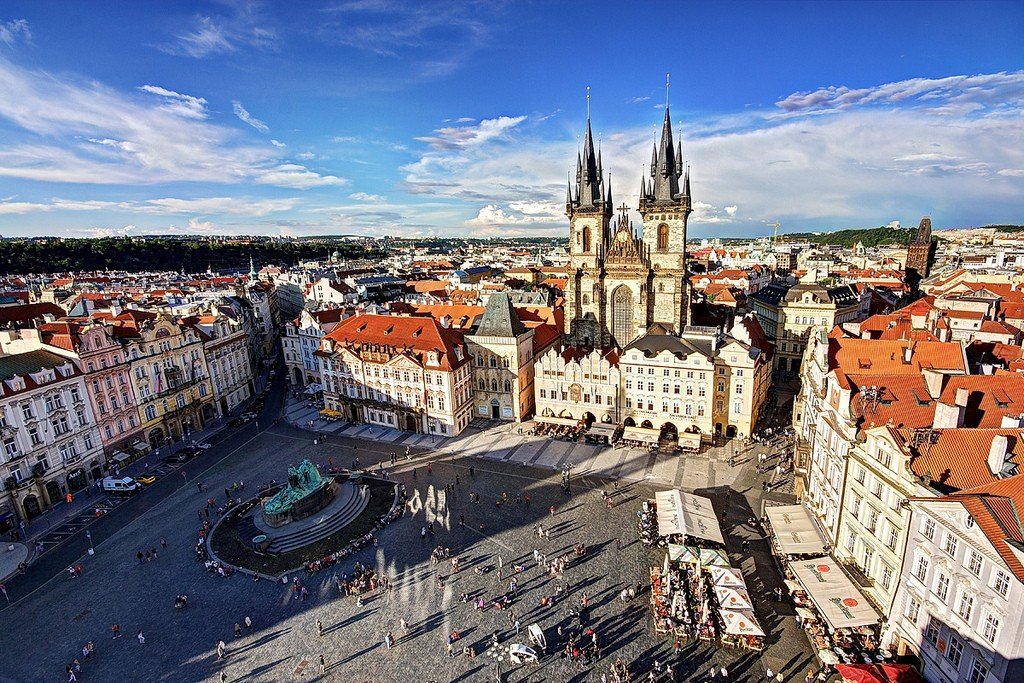
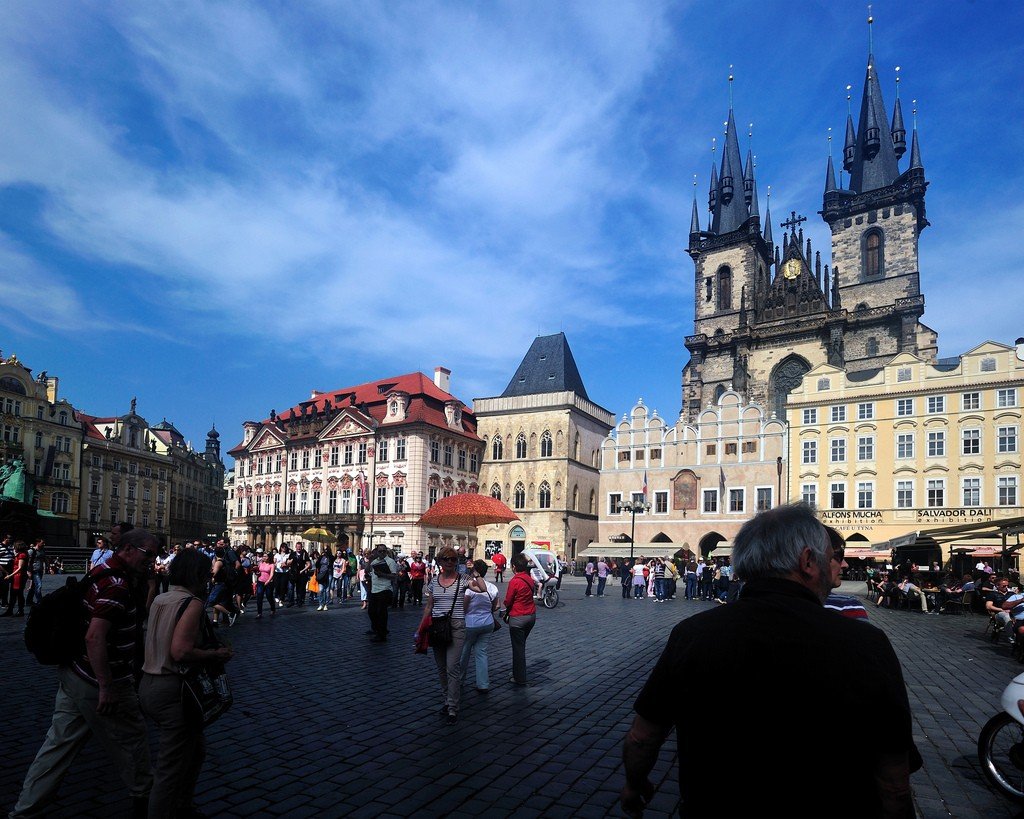
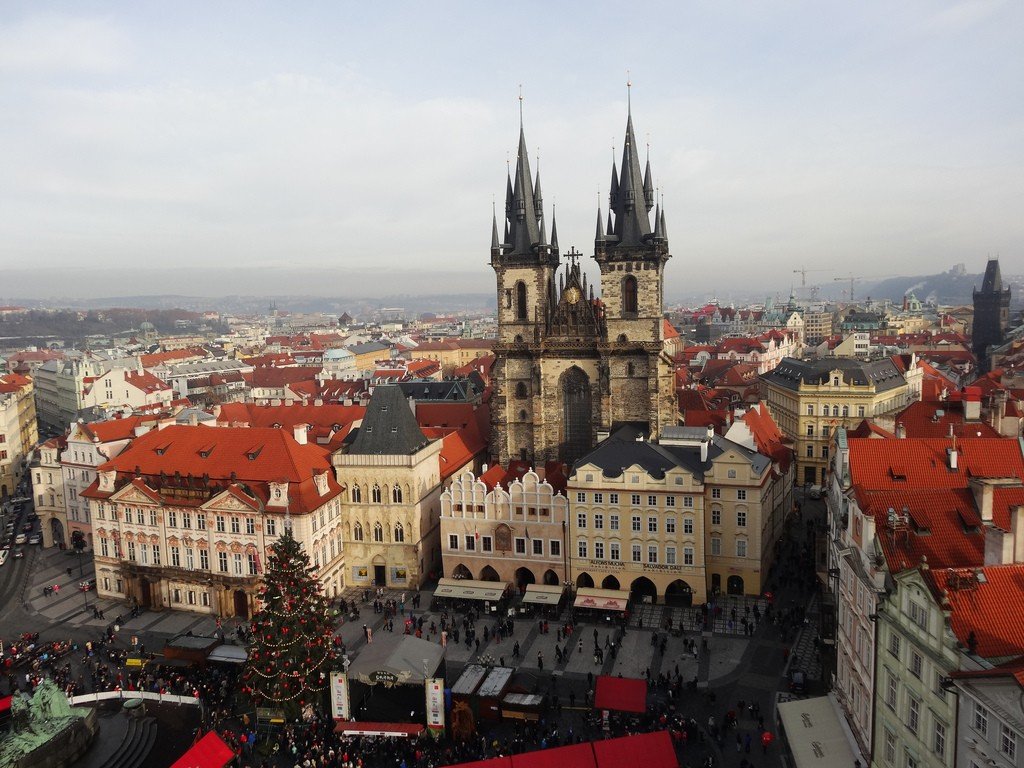
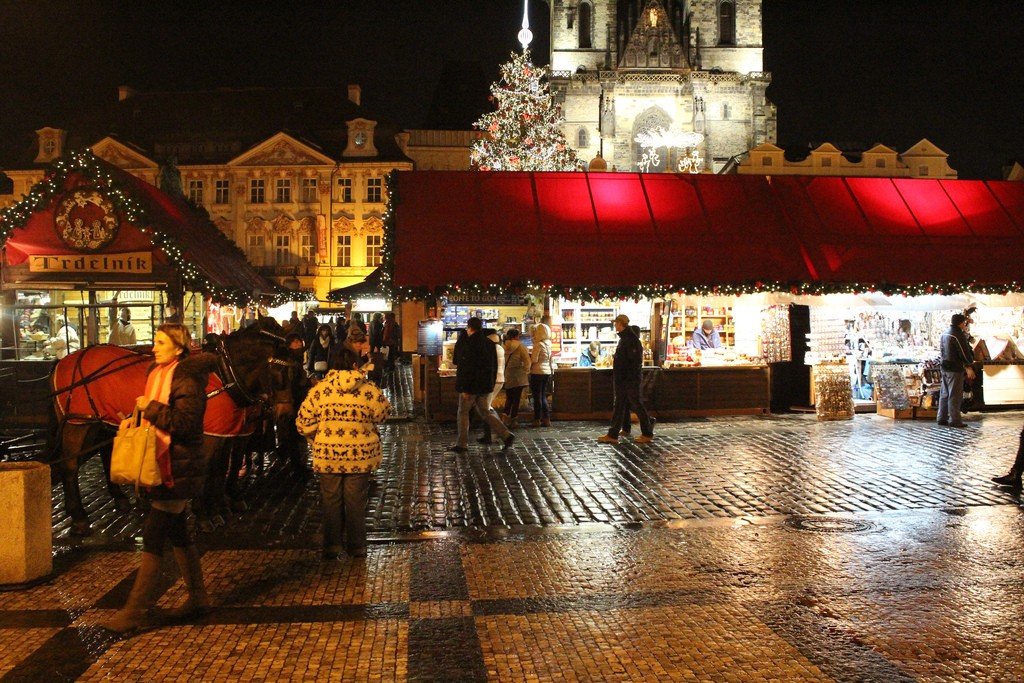
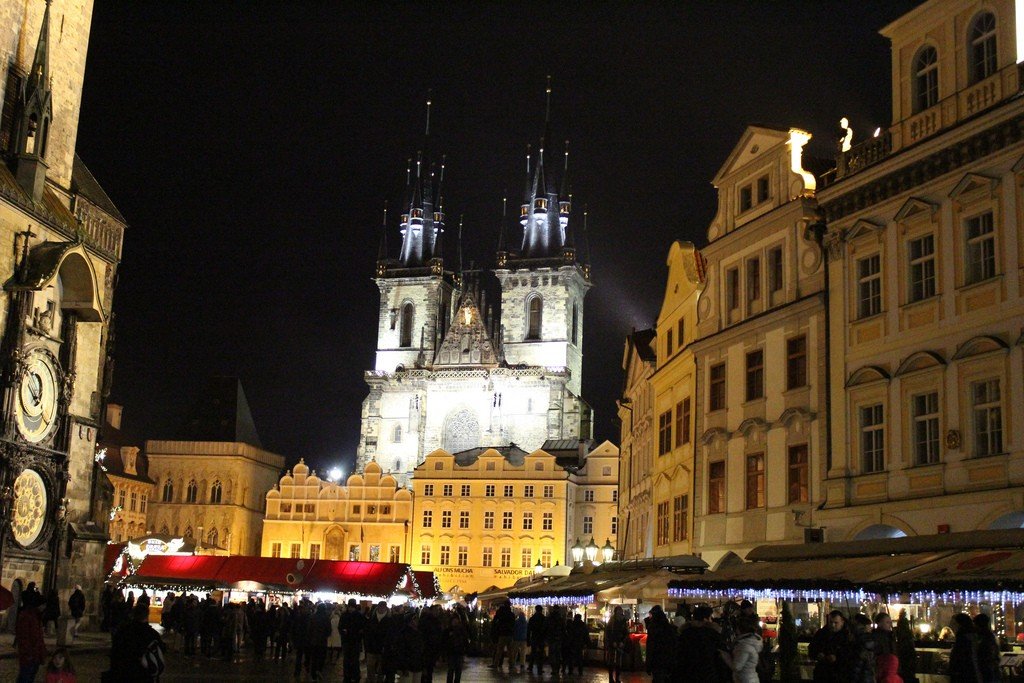
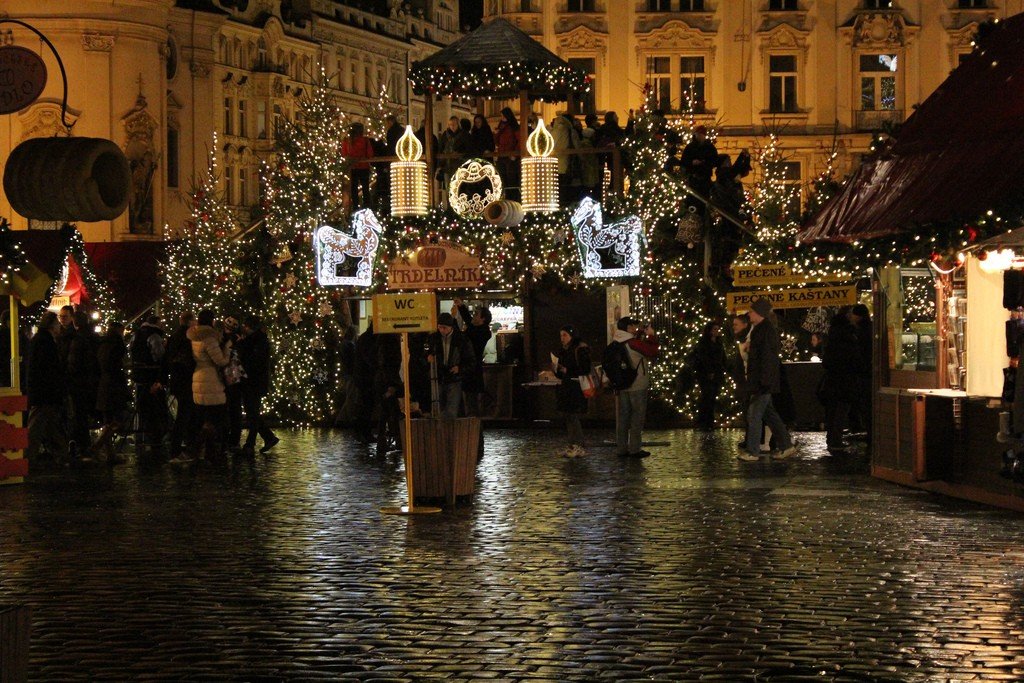
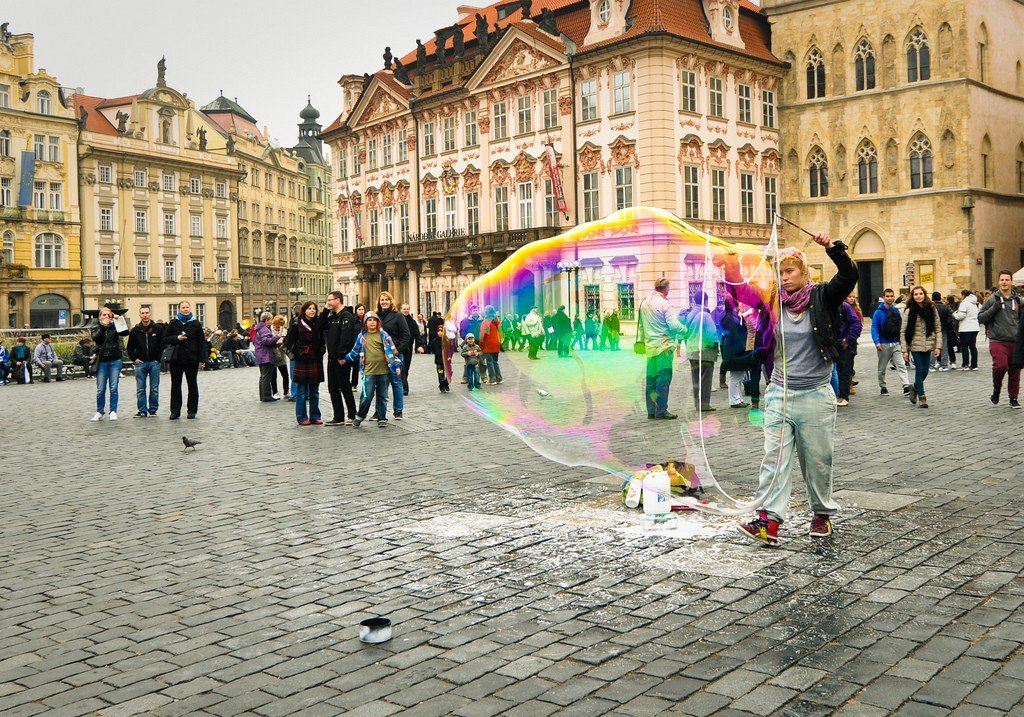
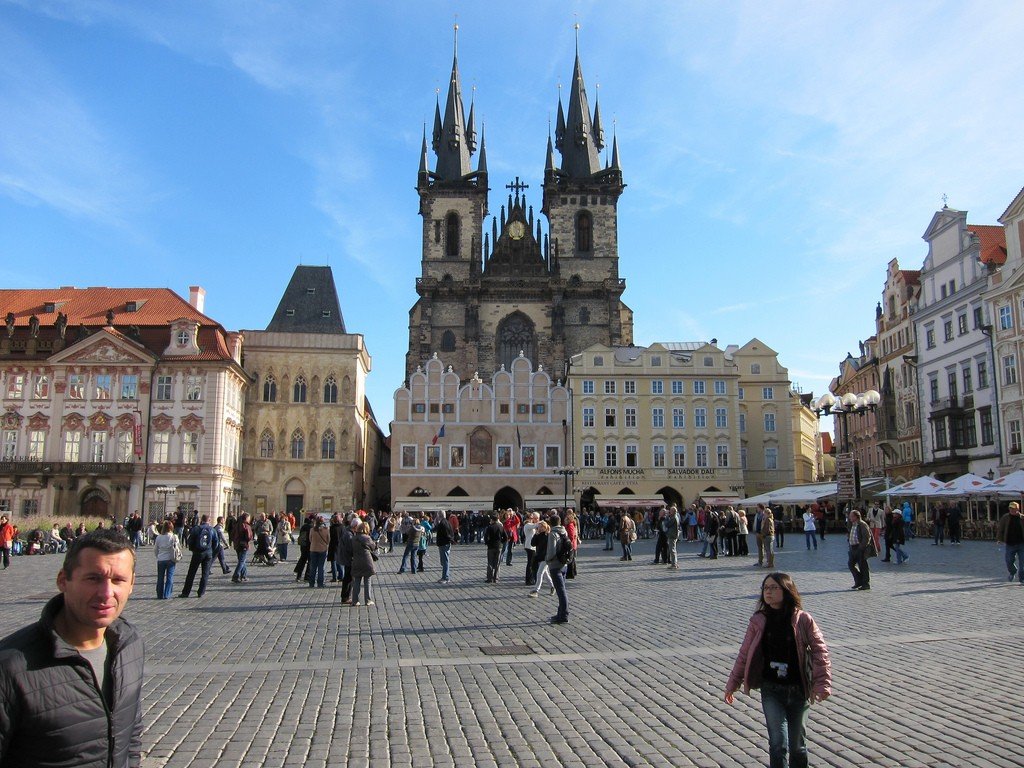
Video: Old Town Square
ContentsHighlights
Old Town Square is a truly unique place. Here are concentrated buildings built in Rococo and Baroque, Gothic, Classicist and avant-garde styles, as well as those dating back to the Renaissance. From it, like rays, narrow medieval streets scatter, over which time has not ruled – to our days they have survived almost in pristine condition. The area of Prague’s most famous landmark is about 15 thousand square meters. This huge territory is almost never empty. Old Town Square is always crowded: passers-by stroll around, couples in love meet. And there are also many tourists – both those traveling alone and in groups, accompanied by guides.
.
Visitors to the city on the Vltava River are interested in everything here, because this is where the beautiful Prague began centuries ago, from the Stare Mesto district. Old Town Square is a symbol of its ancient history and keeps many unsolved mysteries. By the way, all lovers of the unknown will surely be interested in the unique exhibition “Mystical Prague”, located in the basement of the ancient Town Hall.
.To come to the capital of the Czech Republic and not to visit the Old Town Square is impossible to imagine! Here beats the heart of the ancient city and boils modern life. Everything here is imbued with the breath of past generations, and at the same time you can easily feel how Prague lives today, what is the mentality of the locals, what they are interested in and passionate about. Such an amazingly harmonious connection of times and generations cannot fail to impress.
.On Old Town Square you can not only walk around and admire the beauty, but also have a great rest. It is home to many medieval restaurants and breweries. Moreover, there is a small restaurant in the basement of almost every house. In this place you will be offered a glass of excellent, world-famous Czech beer and dishes of the national cuisine, known for its culinary delights and centuries-old traditions.
.
A vacation in the heart of old Prague promises to be a real event, the memory of which will warm you for a long time, so we say to you: welcome to Old Town Square – where modernity does not let go of the past, and the past does not even think of fading into oblivion.
.History of Old Town Square
The main square of the Czech capital is so old that it remembers the times when the current historic center was not yet built up. And it, then called Velka Bolshaya, already existed, but it was not a square in the classical sense. It was a large marketplace, where trade routes from all over Europe came together.
In the XIII century the square began to be intensively built up. About 300-400 houses and more than a dozen Catholic churches were erected. Through it passed lavish royal processions, causing a storm of delight and admiration among ordinary people. And at the same time, the square has seen many tragic events. Many times the stones of its sidewalk were stained with the blood of prominent public figures, unwanted by the authorities. Here the active supporters of the Hussite movement – Jan Želivsky and Jan Rogacz, executed in 1422 and 1437 respectively, found their deaths. In 1621 the participants of the Revolt of the Czech Estates against the Habsburg dynasty were beheaded here. A total of 27 people were beheaded, among them many prominent figures of science and art. To commemorate these tragic pages of Czech history, the same number of crosses were placed on the sidewalk near the Old Town Hall. On them one can see the emblem of a sword and crown in thorns.
In the same 13th century, the square was called the Old Market, and from the next century it was called the Old Town Market. In the 18th century, the succession of renaming continued. The main square of Prague was called Staromestský platz, then Staromestská plaza and simply – Great Square. The modern name was officially given to it only in 1895.
.And now let’s go back in chronology a little bit to tell how the territory of Old Town Square was built up. In 1365, the Týn church was built next to it. At the beginning of the 14th century, the famous City Hall was erected. The astronomical clock, known today as the Prague Orloj, was installed here in 1410. The Krotsinova Kashna fountain appeared in 1591, and in 1650, to commemorate the liberation of Prague from Swedish invaders, the Marian Pillar was erected on the square, which stood until 1918, i.e. until Czechoslovakia gained independence from Austria-Hungary. A memorial plaque now stands in its place. And in the middle of Old Town Square, right on the paving stones, you can see the so-called noon marker – the place where the shadow of the Mariánské Pillar fell at noon.
.
By the end of the 19th century, some of the buildings were demolished. Accordingly, Old Town Square became even wider. In 1915, one of the most famous Prague monuments appeared here – to the national hero Jan Hus, who in the 15th century led the reform movement against the domination of the Catholic Church. In the 1960s it became a pedestrian zone.
.Sights of Old Town Square
The first thing that catches the eye when visiting Old Town Square is the Týn Church, a true architectural gem in the Gothic style, located on the eastern side. The temple, officially named after the Virgin Mary in front of Týn, is the dominant feature of the square. And even if you have never seen it before, including in pictures, it is impossible to confuse it with any other building. What makes the iconic building so recognizable are its two distinctive Czech Gothic towers. If you are heading to Old Town Square from the nearby streets or from the other two squares – Wenceslas Square and Republic Square – they will serve as an excellent reference point.
.
Why was this temple named this way? There is a legend from which we learn that behind the square, if you head towards the Powder Tower, turning behind the temple, there was an inner courtyard, which was called Týn. This is where merchants lived and conducted their commercial business, and the customs office was also located here. And since the temple was located “in front of Tyn”, it predetermined its name. For a long time it served the Hussites as the main cathedral, but in the XVII century it was taken away by the Jesuits. The Týn church has a rich interior decoration, which was worked on not only by Czech but also by famous foreign craftsmen. The cult building is also known for the ashes of the famous Czech mystic, alchemist and astronomer Tycho Brahe.
.The already mentioned monument to Jan Hus is also impossible to miss. The national hero appears in this statue with his head proudly raised, thus demonstrating the steadfastness of his views and beliefs. There is a paradox in the fact that this figure from the Middle Ages is honored as a hero. Most Czechs are Catholics, and Jan Hus held heretical views, but nevertheless the local population honors him from generation to generation. You can relax near the monument by sitting on the benches around it. Prague’s street talents often perform here, and time flies by while listening to pleasant music.
.
And perhaps the most famous and popular attraction of the square is the Old Town Hall. It is a complex of buildings that in the Middle Ages housed the governing bodies of Stare Mesto – the historic district was then an independent city. In the new times, namely after 1784, it was the seat of the municipality of the whole of Prague. The dominant feature of the Town Hall is the 56-meter high tower with the astronomical clock on it, which to this day is still delighting tourists with its amazing performance. At exactly noon, the figures symbolizing many human vices, such as death and retribution for sins, begin to move. A skeleton pulls the bell rope, while an Angel raises a punishing sword and brings it down mercilessly.
.Its building complex also includes five houses and a chapel with a bay window. We have already said above that there is a memorial to the beheaded participants of the revolt against the Habsburg dynasty. Let us add to this that the heads of 12 of the 27 executed hung in cages on the Charles Bridge for 10 years. As they say, for educational purposes, so that the other Hussites would not be in trouble.
.
Tourists do not pass by another attraction of Old Town Square – the Church of St. Mikulash or, in Russian, the Church of St. Nicholas. This religious building can be called grandiose without exaggeration. It is made in the Baroque style and is the leading church of the Czechoslovak Hussite Church, which was founded by Jan Hus. At first, it was one of the oldest churches in the city, built presumably in the 12th century. The main church of the Hussites got its modern look in the first half of the 1900s. A few years ago, the religious building underwent a thorough reconstruction, its facade was covered with a construction net, but this did not prevent tourists from admiring the beauty of the building, at least from afar.
.Kinský Palace, the residence of an influential former noble family, is also located on Old Town Square. Its building is outstanding in every sense: it does not stand on the same line as the other buildings, but slightly protrudes beyond it. The Kinský Palace is famous not only for its distinctive architectural style, but also for the fact that Bertha Kinský was born here and spent her childhood there. The famous writer and social activist made history as the second female Nobel laureate in history. The first female representative of the fair sex to be awarded the prestigious prize was, as is known, the famous physicist, researcher of radioactivity Marie Sklodowska-Curie. Kinskaya also became the first woman to receive the Nobel Peace Prize from the Nobel Foundation: it happened in 1905.
.
The spirit of freedom and ease that reigns here, combined with the feeling of a kind of medieval holiday, is complemented – rather even completed – by old mansions. Of course, they are not palaces in the literal sense of the word, but they are not inferior to them in terms of originality of architectural style and popularity. For example, the house “At the Stone Bell”: the main facade of this bourgeois mansion, which is located on the eastern half of the square, has the appearance of a Gothic tower. It was named after the original house sign – in the form of a stone bell. The building is built in the spirit of classical Romanism, its halls and other rooms have been restored, and many of them host exhibitions of contemporary art.
.
In the 15th century, another house appeared here, called “By the White Unicorn”, better known as Trčkovský dom. It served for a long time as a residence for the Trčkov family, influential nobles, natives of Lipa. In the middle of the century before last, the mansion was rebuilt, giving it typically classical features. The Storch House, on the other hand, is a mediation of several styles. On its facade we can see images of St. Wenceslas on horseback and the famous teacher Jan Amos Comenius, as well as frescoes with coats of arms – all decorations are made in the Renaissance style and perfectly harmonize with the balcony (the latter is made in the neo-Gothic style). Above the entrance to the building there is a statue of the Madonna, as if welcoming visitors. Under the balcony you can see the numbers “1897”, indicating the date when the Storch House acquired its current appearance.
.
The house “By the Golden Unicorn” was home to Prague’s first public library. It opened its doors to book lovers as early as 1781. The poet and publicist Karel Havlíček-Borovský lived here from 1829 to 1939, one of the founders of Czech journalism and one of the founders of national literary criticism. This house is also associated with the name of the famous composer Berdžich Smetana (emphasis on the first syllable), who opened his own music school here. A memorial plaque was erected in his honor and can be seen on the corner of the building. Nowadays there is a small gallery in the house. It exhibits the works of avant-garde masters.
.Another mysterious house sign – a lamb with a horn – can be seen on the house “By the Stone Lamb”. It is possible that the sign depicts not a lamb, but a unicorn after all. If so, that house name is not accurate. However, everyone is already used to it, and it is hardly advisable to change it.
.
Between 1907 and 1914, a popular literary salon owned by Bertha Fantova-Vertheim operated on Old Town Square. It was located in the house “By the Stone Table”. Such famous people as Albert Einstein, Max Brod and Franz Kafka liked to visit this place. The plaque dedicated to Einstein testifies that the great scientist did visit the house. From it we learn that the father of the theory of relativity, it turns out that here not only met with friends-writers, but also … played the violin.
.
In addition to these houses, there are others on Old Town Square with equally interesting names: “By the Golden Crown”, “By the Golden Horse”, “By the Blue Goose”, “By the Stork”, “On Kamenets”, “By the Red Fox”, “By the Golden Angel”, “By Kryštof”, and “By the Ox”. The two large buildings on Old Town Square are government buildings, they are occupied by the Czech Ministry of Regional Development. Behind them begins the former Jewish Quarter, also known as Josefov’s..Let’s finish our sightseeing review with the Týn School, one of the three oldest educational institutions in the Czech capital. As you realize, it is also located on Prague’s main square. The school was founded at the end of the 13th century and all disciplines were taught in Latin. In the middle of the XIX century, the school had a housewarming party, moving into the Church of St. James. The building of the Týn School is decorated with an exclusive fresco from the 18th century. It depicts the Assumption and is the dominant element of the facade. In the inner courtyard there is a sgraffito dating back to the Renaissance. Its age is not known, but historians believe that it is as old as the school itself. The old building now houses a store. It is also home to the ticket office of Via Musica, a society specializing in organizing organ, classical and jazz concerts in Prague.
.How to get there
It is not difficult to get to Old Town Square if you are in the center of Prague. You can easily walk to it from the famous Charles Bridge, Wenceslas Square or the National Theater of the Czech Republic.
If you are in another part of the city, take streetcar #17 or #18. The stop is “Staroměstská.”
You can also get to Old Town Square by metro. Get off at the stop “Staroměstská” (green line), then, after getting off at Kaprov Street, walk in the opposite direction from the Vltava River.
.
